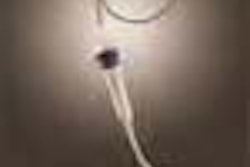
The predominance of a single
language in science, in this case English, has clearly been a positive force
for technological progress and the spread of information. Radiology, for its
part, has prospered from the easy exchange of information flowing from
meetings, studies, and other scientific forums where English serves as the
"lingua franca" of our international community. But this one-way street can
hinder progress as well, especially when subtle cultural and professional
distinctions are lost in the rush to embrace a universal
language.
With the goal of creating a stronger Internet voice for the
radiology community in more than 20 Spanish-speaking countries, the RADIOLOGIA electronic mail list was established in 1998
under the auspices of RedIRIS, an academic network financed by the Spanish
government. The Madrid-based network links the entire Spanish university
system, and all of its funds are earmarked for the development of Internet
applications such as mail lists. Altogether there are 100 RedIris lists
dedicated to topics such as science, law, and journalism.
"The idea
behind all the lists is to use Spanish in the scientific realm, and perhaps
have a bit of defense (against) the overwhelming predominance of English,"
said Dr. Federico Javier Rodríguez Recio, Radiology Department head with the
Hospital General de Soria, and associate professor at the Universidad de
Valladolid in Spain. Recio founded the list in 1998, and now serves as its
administrator.
"Spanish is the language we use all the time," he
said, "and sometimes we have common problems we can address, not just in
Spain but in Latin America as well," he said. "We are united by culture and
by the ways in which we work -- sometimes more than with the
English-speaking world."
The EUFORA example
RADIOLOGIA
has a lot in common with the other European radiology list, EUFORA,
including many members who participate in both groups. Yet there are
important differences as well, Recio said. For one, EUFORA participants can
send messages in any language; the organization uses automated translation software to translate them before they're posted. But Spanish is mandatory at
RADIOLOGIA.
"We have members from England, and a few from the United
States," he said. "We prefer that they use Spanish. We think it's better to
post a message with mistakes than to use automatic translators," he
said.
Another difference is in the membership requirements. Unlike
EUFORA, the Spanish list welcomes all professionals in the field of
radiology; there's no need to be a doctor to join. Whether you're a
radiologist or an executive with Agfa or Mallinckrodt, Recio said, all
that's required of members is that they tell the truth about their
professions, and that they avoid posting commercial content.
Despite
this last requirement, if a contribution or discussion topic requires naming
a particular brand or piece of commercial equipment, there's no need to
worry, Recio said. RedIRIS is supported with public funds. It also depends
on the volunteer labor of many professionals, including the administrators,
who are not compensated, he said. That's why the organization works hard to
ensure that the lists don't become tools for commercial
interests.
"Mail lists are very different from newsgroups," he said,
"and should be used as professional forums rather than as commercial
bulletins."
The RedIRIS team in Madrid represents an enormous asset
for developing and controlling the lists, he said, in that it provides free
administrative support that functions beautifully. The system architecture,
for example, allows for easy modification of any part of the subscription
process. So far this structure has even allowed the group to avoid serious
problems with the viruses that have plagued other lists, he said.
"If
there were some problem with a subscription, or someone who wanted to, say,
bother the other members or send them junk mail, we could stop this person
definitively from the RedIRIS offices," he said. "RADIOLOGIA gets the
benefit of the team's seven or eight years of experience in list
administration."
A world of topics
The list is in a
growth phase now, with some 262 members at the end of April -- a hundred
more than a year ago. Discussions cover the gamut of radiologic topics,
especially technical questions, Recio said. So far the list has addressed
questions about CT and MRI, for example, and problems with DICOM standards
and image digitalization, as well as areas such as the evolution of
sonography as a specialization. There are also announcements for meetings,
both real and virtual, like the series of chat sessions on PET held on the
Web site of the Spanish Society of Nuclear Medicine (www.semn.es).
"We've answered a lot of questions from students and residents about
literature searches and Internet resources," he said, "and given a lot of
support to countries such as Venezuela, Peru and Cuba," responding to
requests for documentation or scientific studies. The list recently
established an agreement with the Peruvian academic network for the exchange
of information, he said.
Still, a RADIOLOGIA subscriber will notice
before too long that the list could definitely benefit from more discussion,
more debate, and more participation overall. While it's
understood that the list is only about 80% of the size of EUFORA in terms of members,
sometimes the number of messages seems even smaller.
"This list has
the same problem as all the other subscriber lists," Recio said, "in that
people are accustomed to the Internet as a place to go see things, and go
get things. What they're not accustomed to is participating in
discussions."
Looking ahead
Still, with time and a few
more members, Recio is confident that participation will continue to grow.
The list will take another step forward in its development this spring with
a membership meeting scheduled during the Spanish Radiology Society's (SERAM) national congress in May. Members
will discuss the idea of naming list managers, or co-owners, for areas such
as CT or PET, as EUFORA has done.
Their main job will be to "convey
the latest information to the list about their particular areas," he said,
"and summarize what's been discussed, because at the end of a discussion,
topics can wind up a little deconstructed."
As experts in their
respective fields, the managers will help organize and moderate the
discussion, yet without wielding authority over any other members. He said
the list is designed to be a level playing field where "nobody is better
than anybody else."
At the tender age of two, RADIOLOGIA has already
become an important forum, Recio said.
"The biggest advantage is
knowing what other professionals are doing in Spain and Latin America --
taking the pulse of radiology," he said. "Radiology is at a crucial moment
of major growth, with many accomplished professionals, and many young
professionals who really want to work. But they're all spread out in their
own hospitals and their own cities. The list allows them to benefit from the
Internet's enormous advantage of instant communication," Recio said, "for
consultation, for help, and as a forum for debate. I think the future
results will be very good."
AuntMinnie.com staff writer
May 5, 2000
Other Spanish-language Internet resouces:
APURF -- Asociación de Profesores Universitarios de
Radiología y Medicina Física http://www-rayos.medicina.uma.es/Apurf/Apurf-web.html
Centre Hospitalari y Cardiologic de Manresa (enlaces a páginas de
radiología en el Internet) http://www.chucm.org/radiologia/fraplicarxsp.htm
Diagnostic Imaging América Latina http://www.di-america-latina.com/homepage.shtml
Radiodiagnóstico -- Diagnóstico por la Imagen http://members.es.tripod.de/RADIOLOGIA/
Servicio de
Radiología del Hospital Rio Carrión de Palencia http://www.geocities.com/CapeCanaveral/Launchpad/1602/
Servicio de Radiología del Hospital 12 de Octubre de Madrid
http://members.es.tripod.de/DOPPLER/RADIOLOGIAH12O.html
Univers
itas Malcitana, Departamento de Radiología y Medicina Física
http://www-rayos.medicin
a.uma.es/rmf/rmf.htm
Let AuntMinnie.com know what you think about this story.
Copyright © 2000 AuntMinnie.com


















